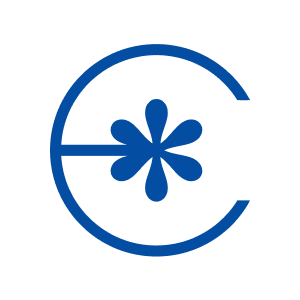Flexi Cap Funds
Flexi Cap Funds invest in companies of all sizes, providing a flexible and dynamic portfolio for potential long-term growth in evolving market conditions.
Long Horizon
44 Funds
₹5,46,435 Cr Total AUM

Flexi Cap Funds invest in companies of all sizes, providing a flexible and dynamic portfolio for potential long-term growth in evolving market conditions.
Long Horizon
44 Funds
₹5,46,435 Cr Total AUM

Sort By
| Fund name | Fund size | Expense Ratio | 3Y Returns |
|---|---|---|---|
 Invesco India Flexi Cap Fund Direct Growth Flexi Cap Very High Risk | ₹4,679 Cr | 0.56% | 22.4% |
 Parag Parikh Flexi Cap Fund Direct Growth Flexi Cap Very High Risk | ₹1,29,782 Cr | 0.63% | 22.1% |
 Motilal Oswal Flexicap Fund Direct Growth Flexi Cap Very High Risk | ₹14,312 Cr | 0.87% | 22.0% |
 Bank of India Flexi Cap Fund Direct Growth Flexi Cap Very High Risk | ₹2,252 Cr | 0.5% | 21.6% |
 HDFC Flexi Cap Fund Direct Growth Flexi Cap Very High Risk | ₹94,068 Cr | 0.68% | 21.6% |
 JM Flexicap Fund Direct Growth Flexi Cap Very High Risk | ₹6,015 Cr | 0.55% | 21.1% |
 WhiteOak Capital Flexi Cap Fund Direct Growth Flexi Cap Very High Risk | ₹6,864 Cr | 0.51% | 20.4% |
 Edelweiss Flexi Cap Fund Direct Growth Flexi Cap Very High Risk | ₹3,073 Cr | 0.43% | 20.2% |
 ICICI Prudential Flexicap Fund Direct Growth Flexi Cap Very High Risk | ₹20,054 Cr | 0.77% | 20.0% |
 HSBC Flexi Cap Fund Direct Growth Flexi Cap Very High Risk | ₹5,247 Cr | 1.17% | 19.4% |
As per SEBI's classification, flexi cap mutual funds are equity funds that are required to invest at least 65% of their assets in equity and equity-related instruments. The unique feature of flexi-cap funds is that they can invest in equity across market capitalisations without any specific limitations, unlike large-cap, mid-cap, and small-cap funds
The flexibility to invest across market capitalisations gives the mutual fund managers the ability to seize investment opportunities without restrictions.
The inherent benefit of asset allocation gives Flexi-cap funds a competitive edge. A proficient fund manager is capable of predicting market trends and strategically allocating assets to benefit from market upswings while being safeguarded from downturns.
No restrictions concerning the allocation of funds across different market caps and sectors work in the fund’s favour. Such diversification can help in the effective management of risk and reward.
Historical data shows that flexi-cap funds have provided returns of 30-34 times over the past 20 years. In 2023, 24 out of 32 schemes have outperformed their benchmark.
With flexi-cap mutual funds, you can enjoy exposure to large-cap companies with a solid track record and a steady growth rate. These companies can help you cushion your portfolio from market fluctuations and provide stability.
On the other hand, you can also tap into the high growth potential of mid and small-cap companies that are still emerging and in their growth phase. Thus, these companies can offer you higher returns in the long run.
| Index | 1Y | 2Y | 3Y | 4Y | 5Y |
| NIFTY 500 | 9.05% | 10.35% | 76.11% | 74.15% | 89.90% |
| NIFTY 100 | 4.35% | 5.62% | 62.33% | 58.69% | 77.32% |
Source: Yahoo Finance
The performance of flexi-cap funds heavily relies on the fund manager's ability to identify market trends and make sound decisions. Consequently, while the potential for increased returns is evident, there is also an amplified risk if these decisions are incorrect.
Since the fund managers can invest across different market caps, the portfolio allocation and risk depend on their choices. Some flexi-cap funds may be aggressive and invest heavily across mid and small-cap companies. On the other hand, some may have a conservative approach.
Often, investors may be exposed to unwanted risk or invest in a very conservative portfolio. Thus, based on the investment objective, you must pick funds that align with your objectives and risk tolerance levels.
Flexi Cap Vs Multi Cap Funds
| Aspect | Flexi Cap Fund | Multi Cap Fund |
| Definition | Invest across different market caps without any allocation restriction. | Must invest 25% in each large, mid and small cap. |
| Risks | Portfolio can be too aggressive with higher mid and small-cap exposure. | Market cap-based investment will restrict the fund manager from rebalancing the portfolio during a market crash. |
| Category Average Returns | 3Y: 20.01% | 5Y: 15% | 3Y: 25.96% | 5Y: 18.53% |
| Advantages |
|
|
| Disadvantages |
|
|
Flexi-cap mutual funds are a popular category, having the highest AUM (of Rs 2,83,765 Cr) across all equity mutual fund categories. Since these funds are not mandated by market cap-specific investment allocation, these funds have a diversified portfolio that suits different investor needs. Instead, the fund manager can pick stocks based on their research and market dynamics.
You can consider investing in flexi cap funds if you are looking for:
Long-term wealth creation
Flexi-cap mutual funds are suitable for those who want to invest for the long term. Investing across large-cap, mid-cap and small-cap without any predefined allocation works in favour of the fund. The high growth potential of mid-cap and small-cap stocks provides an opportunity to create wealth for investors.
Diversification
These funds focus on investing across different industry segments. The impact of market decline may be less on a well-diversified portfolio.
Furthermore, during market corrections, the fund manager can quickly rebalance the portfolio and reduce exposure to high-risk securities. Thus, investors who seek a well-diversified portfolio with active portfolio rebalancing can consider investing in flexi-cap mutual funds.
Rather than investing in a large, mid and small-cap fund, you can consider investing in flexi cap funds to diversify across sectors. However, if investing in more than one fund, you must consider the portfolio allocation of all the funds. Ensure you are not over-exposed to a sector or company.
When considering multiple flexi cap funds or combining them with other equity funds, it's crucial to be aware of portfolio overlap. Portfolio overlap occurs when different funds in your portfolio invest in the same stocks, potentially reducing the benefits of diversification. Always analyze the holdings of your chosen funds to ensure you're achieving true diversification and not inadvertently concentrating your investments.
Note: The above information is for educational purposes only. It is best to consult a financial advisor before making investment decisions.
As per SEBI's classification, flexi cap mutual funds are equity funds that are required to invest at least 65% of their assets in equity and equity-related instruments. The unique feature of flexi-cap funds is that they can invest in equity across market capitalisations without any specific limitations, unlike large-cap, mid-cap, and small-cap funds
The flexibility to invest across market capitalisations gives the mutual fund managers the ability to seize investment opportunities without restrictions.
The inherent benefit of asset allocation gives Flexi-cap funds a competitive edge. A proficient fund manager is capable of predicting market trends and strategically allocating assets to benefit from market upswings while being safeguarded from downturns.
No restrictions concerning the allocation of funds across different market caps and sectors work in the fund’s favour. Such diversification can help in the effective management of risk and reward.
Historical data shows that flexi-cap funds have provided returns of 30-34 times over the past 20 years. In 2023, 24 out of 32 schemes have outperformed their benchmark.
With flexi-cap mutual funds, you can enjoy exposure to large-cap companies with a solid track record and a steady growth rate. These companies can help you cushion your portfolio from market fluctuations and provide stability.
On the other hand, you can also tap into the high growth potential of mid and small-cap companies that are still emerging and in their growth phase. Thus, these companies can offer you higher returns in the long run.
| Index | 1Y | 2Y | 3Y | 4Y | 5Y |
| NIFTY 500 | 9.05% | 10.35% | 76.11% | 74.15% | 89.90% |
| NIFTY 100 | 4.35% | 5.62% | 62.33% | 58.69% | 77.32% |
Source: Yahoo Finance
The performance of flexi-cap funds heavily relies on the fund manager's ability to identify market trends and make sound decisions. Consequently, while the potential for increased returns is evident, there is also an amplified risk if these decisions are incorrect.
Since the fund managers can invest across different market caps, the portfolio allocation and risk depend on their choices. Some flexi-cap funds may be aggressive and invest heavily across mid and small-cap companies. On the other hand, some may have a conservative approach.
Often, investors may be exposed to unwanted risk or invest in a very conservative portfolio. Thus, based on the investment objective, you must pick funds that align with your objectives and risk tolerance levels.
Flexi Cap Vs Multi Cap Funds
| Aspect | Flexi Cap Fund | Multi Cap Fund |
| Definition | Invest across different market caps without any allocation restriction. | Must invest 25% in each large, mid and small cap. |
| Risks | Portfolio can be too aggressive with higher mid and small-cap exposure. | Market cap-based investment will restrict the fund manager from rebalancing the portfolio during a market crash. |
| Category Average Returns | 3Y: 20.01% | 5Y: 15% | 3Y: 25.96% | 5Y: 18.53% |
| Advantages |
|
|
| Disadvantages |
|
|
Flexi-cap mutual funds are a popular category, having the highest AUM (of Rs 2,83,765 Cr) across all equity mutual fund categories. Since these funds are not mandated by market cap-specific investment allocation, these funds have a diversified portfolio that suits different investor needs. Instead, the fund manager can pick stocks based on their research and market dynamics.
You can consider investing in flexi cap funds if you are looking for:
Long-term wealth creation
Flexi-cap mutual funds are suitable for those who want to invest for the long term. Investing across large-cap, mid-cap and small-cap without any predefined allocation works in favour of the fund. The high growth potential of mid-cap and small-cap stocks provides an opportunity to create wealth for investors.
Diversification
These funds focus on investing across different industry segments. The impact of market decline may be less on a well-diversified portfolio.
Furthermore, during market corrections, the fund manager can quickly rebalance the portfolio and reduce exposure to high-risk securities. Thus, investors who seek a well-diversified portfolio with active portfolio rebalancing can consider investing in flexi-cap mutual funds.
Rather than investing in a large, mid and small-cap fund, you can consider investing in flexi cap funds to diversify across sectors. However, if investing in more than one fund, you must consider the portfolio allocation of all the funds. Ensure you are not over-exposed to a sector or company.
When considering multiple flexi cap funds or combining them with other equity funds, it's crucial to be aware of portfolio overlap. Portfolio overlap occurs when different funds in your portfolio invest in the same stocks, potentially reducing the benefits of diversification. Always analyze the holdings of your chosen funds to ensure you're achieving true diversification and not inadvertently concentrating your investments.
Note: The above information is for educational purposes only. It is best to consult a financial advisor before making investment decisions.
By Market Cap
By Diversification
By Sectors & Themes
By Solutions

Invest in mid-sized companies in their growth phase

Invest in the largest 250 companies in India

Invest in the largest 100 companies in India

Invest in small-sized companies in their growth phase

Tracks a market index

Hybrid funds are a combination of equity and debt investments. The blend of these asset classes varies based on the fund's investment goals.

Debt Mutual Funds invest in fixed-income securities such as government bonds, corporate bonds, treasury bills, and other money market instruments.

Download Wealth Monitor App
Track and monitor all
your investments